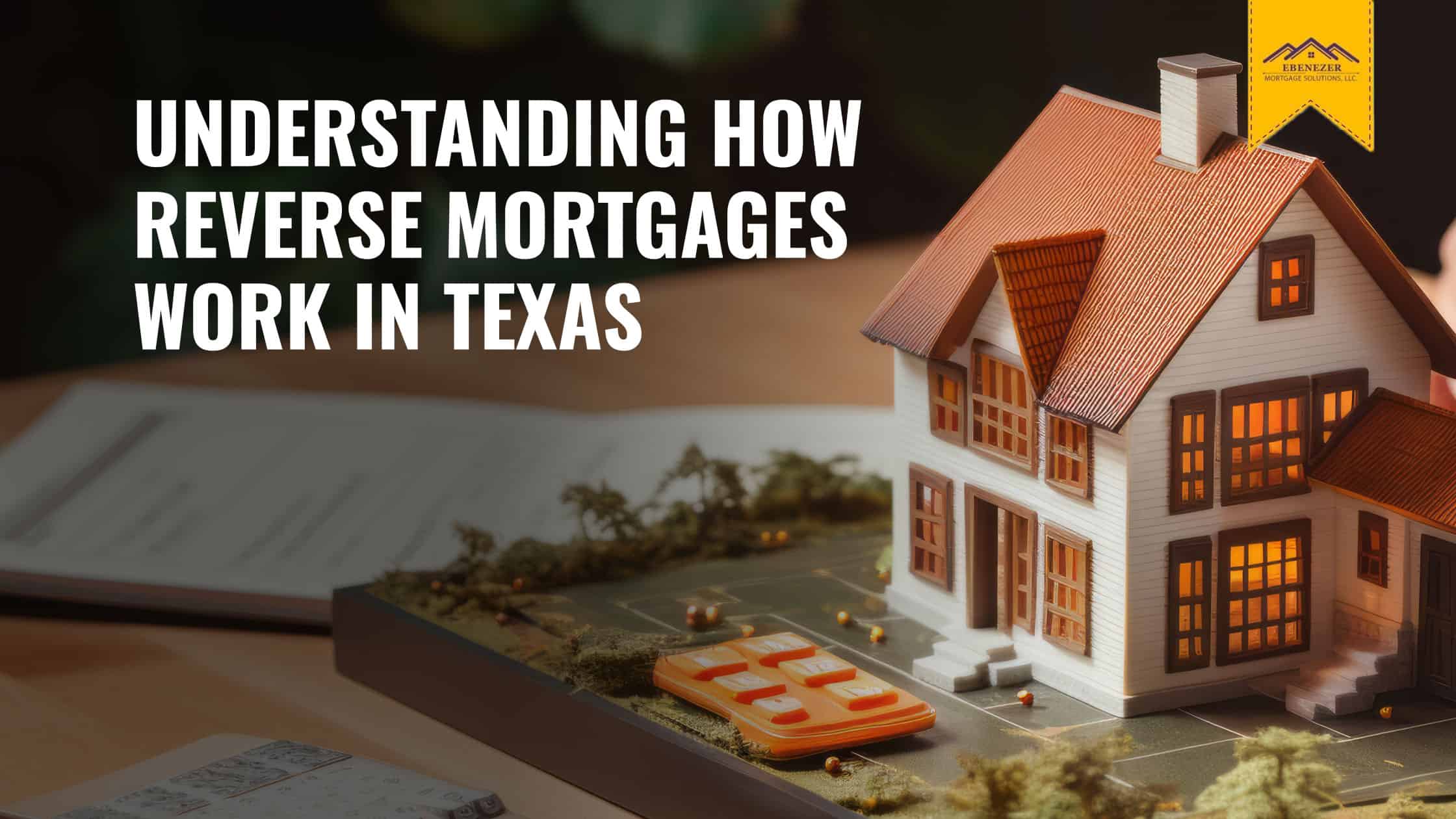Your Most Trusted Partner in Home Purchase Loans & Refinance Loans
Open Hours: Mon. - Fri., 9:00 a.m. - 6:00 p.m.

If you're a Texas homeowner who is looking for a way to supplement your retirement income or pay for unexpected expenses, you may have heard about reverse mortgages.
As a homeowner, you've invested a lot of time and money into your property, and it's natural to want to get more out of it. That's where a reverse mortgage can come in.
With a reverse mortgage, you can tap into your home's equity to receive a loan that can help supplement your retirement income or cover unexpected expenses.
But how does a reverse mortgage work in Texas? If you're a Texas homeowner, you may be eligible for a unique set of benefits when it comes to reverse mortgages.
If you're considering getting a reverse mortgage in Texas, it's important to understand that several different types of reverse mortgages are available. Here are the most common reverse mortgages you can apply for in Texas:
This type of reverse mortgage is offered by some state and local government agencies and nonprofit organizations. The loan is typically used for a specific purpose, such as for home repairs or to pay property taxes.
This is the most common type of reverse mortgage, and it's insured by the Federal Housing Administration (FHA). It's available to homeowners who are at least 62 years old and have sufficient equity in their homes.
This type of reverse mortgage is offered by private companies and is not insured by the FHA. These loans may have different eligibility requirements and loan terms than HECMs.
If you're considering a reverse mortgage in Texas, it's important to meet certain requirements. Here are the key reverse mortgage loan requirements:
Meeting these requirements is important to be eligible for a reverse mortgage loan in Texas. It's also recommended that you complete a counseling session with a HUD-approved counselor to better understand the loan and its costs before applying.
Additionally, a financial assessment will be required to determine your ability to meet ongoing loan obligations. Remember that these requirements may be subject to change, so it's important to stay up-to-date on Texas reverse mortgage regulations.
If you're a Texas homeowner, you may wonder how a reverse mortgage works. Here's a brief overview of the steps involved in obtaining and repaying a reverse mortgage in Texas:
To qualify for a reverse mortgage in Texas, you must meet the eligibility requirements we previously mentioned, such as being at least 62 years old and having sufficient equity in your home.
You will need to complete an application for a reverse mortgage, including providing information about your home and financial situation.
Before applying for a reverse mortgage, you must complete a reverse mortgage counseling session with a HUD-approved counselor to better understand the loan and its costs.
Once you have completed the application process and counseling, the lender will review your application and financial assessment to determine your eligibility for a reverse mortgage.
If you are approved, you can choose to receive your funds in a lump sum payment, monthly payments, or a line of credit. The amount of your loan will depend on your home's value, your age, and other factors.
With a reverse mortgage, you do not have to make monthly payments as you would with a traditional mortgage. Instead, the home equity loan is repaid when you move out of the home, sell it, or pass away. At that point, the loan is paid off using the proceeds from the sale of the home, and any remaining equity is distributed to you or your heirs.
Overall, a reverse mortgage can provide a valuable source of income for Texas homeowners who are looking to supplement their retirement income or cover unexpected expenses. However, it's important to carefully evaluate your options and understand the costs and requirements of the loan before making a decision.

The cost of a reverse mortgage in Texas is largely similar to that in other states. As previously mentioned, home equity conversion mortgages in Texas charge an initial mortgage insurance premium (MIP) of 2 percent at closing, plus an annual MIP equal to 0.5 percent of the outstanding loan balance, which can be financed into the loan.
Additionally, there is an origination fee to process the HECM loan, which is the greater of $2,500 or 2 percent of the first $200,000 of the home's value, plus 1 percent of the amount over $200,000, capped at $6,000.
Lenders may also charge monthly servicing fees, which are capped at $30 for fixed-rate or annually adjusting-rate loans or $35 for loans with monthly rate adjustments.
Third-party fees, such as appraisal and home inspection fees, credit check fees, title search, and title insurance fees, or recording fees, may also apply.
Finally, interest rates for reverse mortgages in Texas, as with most reverse mortgages in other states, tend to be higher than those for traditional mortgages, which can add to the overall cost.
A reverse mortgage can be used for a variety of purposes, but it's important to note that the loan proceeds are not free money. Rather, they must be repaid with interest once the last surviving borrower no longer lives in the home or if the borrower fails to meet the loan obligations, ongoing costs such as paying property taxes or homeowners insurance.
That being said, here are some common ways that reverse mortgage funds are used:
It's important to carefully consider whether a reverse mortgage is the right choice for your specific financial situation and goals and to explore other options, such as downsizing or accessing retirement accounts, before making a decision.
If you're considering a reverse mortgage in Texas, it's important to do your research and weigh your options carefully. At Ebenezer Mortgage Solutions, we understand that reverse mortgages can be complex, and we're here to help you navigate the process.
Our team of experienced professionals is committed to providing you with personalized, trustworthy guidance and support. We'll help you understand the costs and benefits of a reverse mortgage and determine whether it's the right option for your unique financial situation.
To learn more about reverse mortgages in Texas, give us a call today at (813) 284-4027. Let us help you make an informed decision about your financial future.
